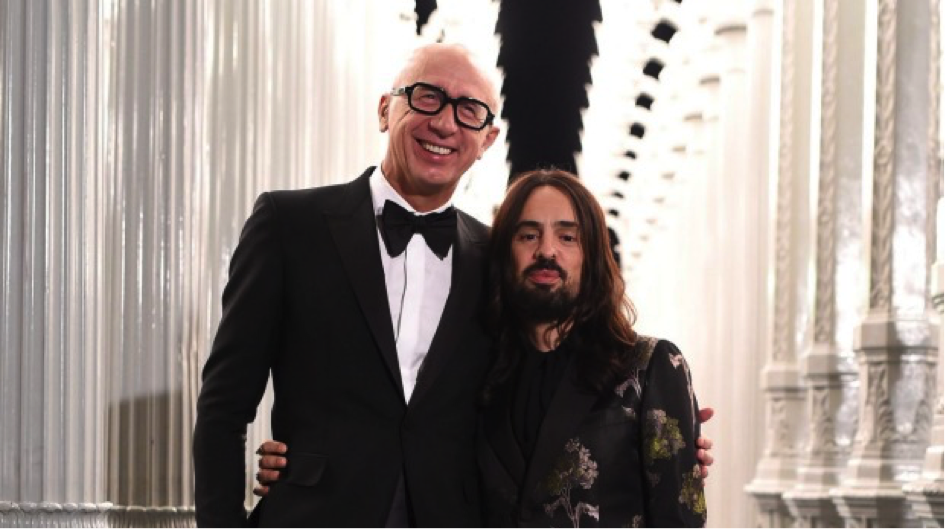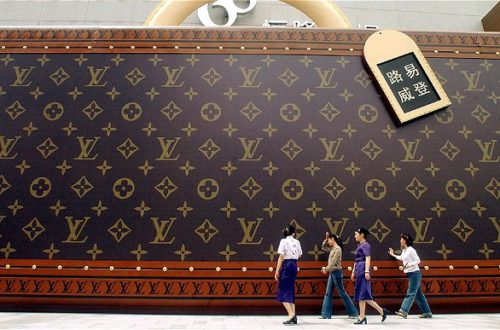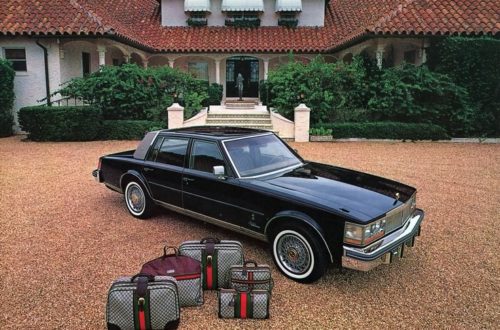We’re in December 2014, and the mutli-brand luxury group Kering announces the departure of Patrizio di Marco and Frida Giannini, respectively Gucci’s CEO and artistic director. This wave of departures from Gucci comes as no surprise, and marks the beginning of a fresh start for the Florentine brand. Set up in 1921 by Guccio Gucci and acquired in 1999 by the ancestor of Kering, PPR, the double G brand was, at the time, going through a rough patch. 2013 has proved to be a downturn in the brand’s sales, a situation that worsened in 2014, with lower sales volume of 1.8% at 3,49 billion euros. Considering that Gucci is the driving force of François-Henri Pinault’s group Kering, accounting for 60% of its results, a deep restructuration and repositioning of the brand within the luxury industry was much needed.

Following the announcement of December 2014, a new page of Gucci’s history was being written, with the appointment of Marco Bizzarri as CEO and Alessandro Michele as artistic director, from then on in charge of the perilous mission of reshaping the Gucci empire.

Next question is how do you save a prestigious Italian luxury brand in a generalised context of downturn in the luxury market ?
One possible answer is first the turning point in the design section of Gucci, subtly rejuvenating its image, brought by the burst of creativity and innovation of Mr. Michele. The 42-year old Italian designer, who had to design the men collection in February 2015 in just five days, is no stranger to the Gucci house. Indeed, he’s been working there since 2002, in the accessories’ design. His vision of women seems to come straight ouf a parallel universe between the filmography of David Lynch and Wes Anderson, using a large range of fabrics, from velvet to latex. His silhouettes are a blend of English, French and Italian cultures, giving rise to a patchwork of historical and philosophical references. The evolution from conventional collections to more bohemian and contemporary ones is marked by a retro-seventies influence, to which one would add a touch of romantism. Flowers, animals, berets and kitsch sunglasses are now part of the Gucci universe. Following a real artistic approach, Mr. Michele, whose creations are rich in details, focuses on the techniques used to create his garments (just for the record, the sleeves of one of his dress from the last collection contained no less than six different needlework techniques).

Gucci’s Spring/Summer 2017 Collection
Regarding operational matters, Gucci’s objective is to have a tight control of its operational expenditures. First, reduce the communication budget by suppressing some costly marketing events and curtail the investments in the traditional advertising campaigns. In addition, a large expansion in the e-commerce field is to be expected, with the objective of tripling its website activities.
Besides, Gucci aims at an organic growth, that is enhancing the rate of sales per square meter (currently around 20000 to 22000 euros) instead of opening new shops. For this matter, and according to Mr. Bizzarri’s words « Fashion is about creating emotion », 34 of the 522 Gucci stores (and many more to come..) worldwide are being rearranged and redecorated, to stick to the brand’s new spirit.
By doing this, the double G brand manages to enlarge the spectrum of its consumers without losing its position on the luxury sector, bringing back some of the old ones, and seducing the new generation, with a 50% increase in the under-35 customers. The next challenge is to create customer loyalty and anchor their comparative advantage vis-à-vis its competitors.
Besides, Kering’s protégé now places greater emphasis on promoting its range of accessories, from silk headbands, to smartphone cases and rings.
 Gucci’s new stores design
Gucci’s new stores design
In the long-run, Gucci aims at a 6 billion annual turnover (the estimate is set at 4 billion for the current year), and wants to perform twice better than the average on the luxury market on the middle run. An ambitious but not unrealisable objective, considering its half-year financial statement, closing the first semester of 2016 with an increase in sales of 3.6%. Marco Bizzarri is seemingly patient and confident in the future as he says it will just take some time for the customers to understand the change undergone by the Italian luxury brand.
The challenge is now to sustain such a momentum, and allow Gucci to evolve without redudancy.
by Marie Motti






